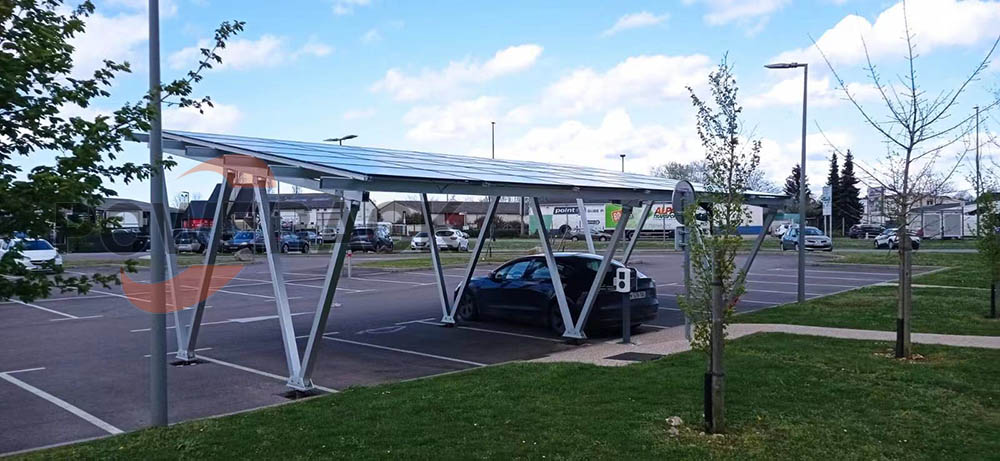
Conception structurelle et scénario d'application
La conception d'un système de montage de carport photovoltaïque doivent être adaptés au scénario d'application spécifique. Par exemple, différents scénarios, tels que les installations industrielles, les zones commerciales et les parkings, peuvent nécessiter des exigences de montage différentes en termes de capacité de charge, de résistance au vent et aux tremblements de terre, et d'étanchéité. Par exemple, les environnements côtiers ou hautement corrosifs peuvent nécessiter l'utilisation de matériaux plus résistants à la corrosion, comme l'acier inoxydable ou l'acier galvanisé à chaud. De plus, différents scénarios peuvent également nécessiter des angles de montage et des caractéristiques différents. structures de soutien (par exemple, colonne unique, direction unique, double colonne, direction unique, etc.).
Matériaux et durabilité
Le choix des matériaux a un impact direct sur la durabilité du système et les coûts de maintenance. Par exemple, l'alliage d'aluminium, l'acier galvanisé et l'acier galvanisé à chaud offrent chacun des avantages dans différents scénarios. L'alliage d'aluminium, par exemple, est léger et résistant à la corrosion, ce qui le rend idéal pour les applications où le poids et l'esthétique sont primordiaux. L'acier galvanisé et l'acier galvanisé à chaud, quant à eux, offrent une excellente résistance à la corrosion et conviennent aux applications exposées à long terme à l'extérieur. De plus, les matériaux zinc-aluminium-magnésium, grâce à leur excellente résistance à la corrosion et à l'eau, conviennent également aux applications nécessitant une étanchéité.
Intégration fonctionnelle et flexibilité
Le système de montage d'abris de voiture photovoltaïques offre non seulement de l'ombre et produit de l'électricité, mais peut également intégrer des bornes de recharge et des systèmes de stockage d'énergie, réalisant ainsi une « intégration stockage-recharge solaire ». Par exemple, un solaire abri d'auto Permet de recharger les véhicules électriques tout en stockant l'électricité excédentaire grâce à un système de stockage d'énergie, améliorant ainsi l'efficacité énergétique. Cette intégration multifonctionnelle renforce la praticité et la rentabilité du système.
Installation et maintenance
Différents scénarios d'application nécessitent des méthodes d'installation et de maintenance différentes. Par exemple, les grands Carports photovoltaïques (comme ceux des installations industrielles) peuvent nécessiter des processus d'installation plus complexes et des exigences de maintenance plus strictes, tandis que les abris de voiture plus petits privilégient la facilité d'installation et la maîtrise des coûts. De plus, l'étanchéité et le drainage du système de montage doivent être optimisés pour l'application spécifique afin d'éviter les infiltrations d'eau de pluie et les dommages structurels.
Différences de performances et optimisation
Les différences de performances selon les scénarios d'application se manifestent principalement dans la conception structurelle, le choix des matériaux, l'intégration fonctionnelle et les exigences de maintenance. Par exemple, les zones industrielles peuvent privilégier la capacité portante et la résistance au vent, tandis que les zones commerciales privilégient l'esthétique et l'intégration multifonctionnelle. L'optimisation de la conception et du choix des matériaux peut améliorer les performances et l'applicabilité du système.